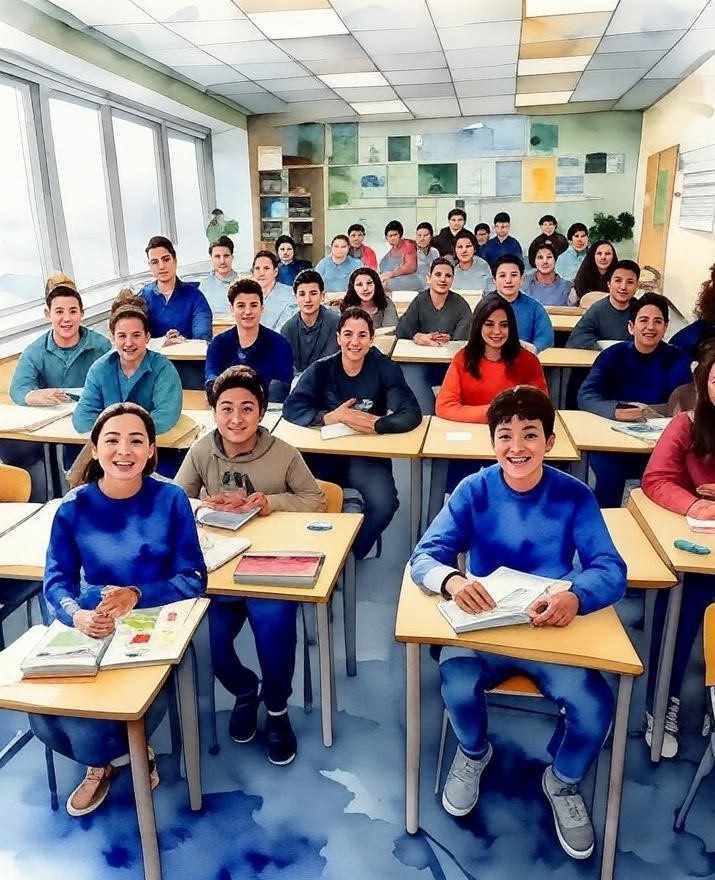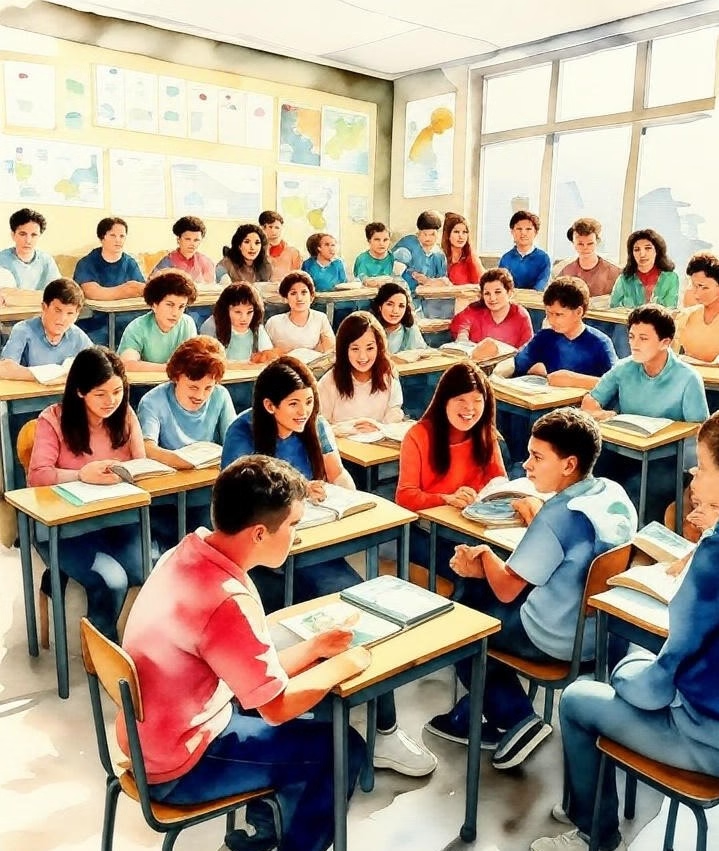🇩🇪 Germany’s Classroom Census Controversy: Should Immigrant Student Numbers Be Capped?

🇩🇪 Germany’s Classroom Census Controversy Should Immigrant Student Numbers Be Capped
🇩🇪 Germany’s Classroom Census Controversy:
Should Immigrant Student Numbers Be Capped?
July 14, 2025 | Author: GrandMaster Bikram Sutradhar
📘 Overview: A Policy Under Fire
Germany is stirring controversy with a bold new proposal by Federal Education Minister Karin Prien. Prien has floated the idea of capping immigrant‑background students at 30–40% per class—a move she claims aims to boost integration and academic performance. Instead, critics warn it may reinforce segregation and widen inequality.

🔍 The Proposal Explained
- In interviews with WELT TV, Prien described the cap as a “conceivable model,” noting parallels with policy experiments in Denmark that limited migrant pupil concentrations in select schools
- She emphasized the core issue: many children begin school without adequate German language skills, which she argues critically hampers educational progress
In support, OECD expert Andreas Schleicher endorsed the idea—that mixing of students by background can significantly affect school performance
👩🏫 Who Supports It?
- Stefan Düll, He also lauded the €20 billion government fund for high-immigrant schools—but warned the cap would be hard to implement in cities where immigrant proportions reach 80–90%
🚫 Opposition: Warnings of Discrimination and Impracticality
- The SPD’s Integration Commissioner, Natalie Pawlik, rejected quotas outright: “Germany does not need quotas in classrooms”
- Bavaria’s Education Minister, Anna Stolz, echoed concerns—calling quotas “unfeasible” and reaffirming Bavaria’s language-based integration strategy instead
- Principal Sabine Schwarz and researcher Dr. Aileen Edele (from Humboldt University’s BIM) stressed that limiting based on immigration status hurts children’s self-worth and doesn’t tackle the real issues: socioeconomics and school quality
·
📉 Systemic Challenges Beyond the Quota
Even without the quota debate, Germany faces structural educational issues:
- PISA 2022 results show Germany sitting mid-table globally, with worrying lows in reading, math, and science.
- The IGLU 2023 study revealed 25% of fourth-graders reading below grade level and 7% dropping out without formal qualification.
- There’s a pressing shortage of 125,000 early childhood teachers, undermining early language development—key for children from migrant families .
🔮 The Way Forward: Policy That Works
Experts propose constructive alternatives over quotas:
- Universal language and development tests for four-year-olds
- Massive expansion in kindergarten staffing and quality
- Focus on socioeconomic support, not demographic restrictions
- Recruitment of diverse, multilingual educators
As Edele says:
“What matters isn’t migration status—but a child’s access to quality education and support.”
🧠 Final Thoughts by GrandMaster Bikram Sutradhar
Germany stands at a crossroad. While the concern about academic standards is valid, a policy that puts percentage limits on students based on heritage risks fueling division rather than healing it.
✅ The real solution lies in building stronger foundations: language-first interventions, workload-balanced classrooms, and inclusive school cultures.
Germany’s future classrooms should measure opportunity—not quotas.
📌 Tags:
#Germany #EducationReform #ImmigrationPolicy #KarinPrien #Integration #LanguageLearning #InclusiveSchools

Full Stack Developer and 5-Time World Record Holder, Grandmaster Bikram Sutradhar
bAstronautWay
SirBikramSutradhar on YouTube
More Story click the link
SirBikramSutradhar on YouTube
ICSE CLASS 10 ICSE CLASS 10 BIOLOGY BASTRONAUTWAY SirBikramSutradhar Bikram Sutradhar GrandMaster Bikram Sutradhar selina biology solutions ICSE Biology Selina Solution
📚 Class 9 Science – Complete Table of Contents (विषय-सूची)
CBSE | NCERT Curriculum | Bilingual (English + Hindi)
By Grandmaster Bikram Sutradhar | SirBikramSutradhar | BASTRONAUTWAY
🔬 PHYSICS (भौतिक विज्ञान)
| 🔢 | Chapter Title (English) | अध्याय का नाम (हिंदी) | Page No. |
| 1️⃣ | Motion | गति | |
| 2️⃣ | Force and Laws of Motion | बल तथा गति के नियम | |
| 3️⃣ | Gravitation | गुरुत्वाकर्षण | |
| 4️⃣ | Work and Energy | कार्य तथा ऊर्जा | |
| 5️⃣ | Sound | ध्वनि |
🧪 CHEMISTRY (रसायन विज्ञान)
| 🔢 | Chapter Title (English) | अध्याय का नाम (हिंदी) | Page No. |
| 1️⃣ | Matter in Our Surroundings | हमारे आस-पास के पदार्थ | |
| 2️⃣ | Is Matter Around Us Pure? | क्या हमारे आस-पास के पदार्थ शुद्ध हैं? | |
| 3️⃣ | Atoms and Molecules | परमाणु एवं अणु | |
| 4️⃣ | Structure of the Atom | परमाणु की संरचना |
🧬 BIOLOGY (जीव विज्ञान)
| 🔢 | Chapter Title (English) | अध्याय का नाम (हिंदी) | Page No. |
| 1️⃣ | The Fundamental Unit of Life | जीवन की मौलिक इकाई | |
| 2️⃣ | Tissues | ऊतक | |
| 3️⃣ | Improvement in Food Resources | धनों में सुधार |
📘 ADDITIONAL SECTIONS (अतिरिक्त अनुभाग)
| 📖 Section | Title (English + Hindi) |
| 🔹 | Glossary / पारिभाषिक शब्दावली |
| 🔹 | Answer Keys / उत्तरमाला |
| 🔹 | Summary / सारांश |
| 🔹 | Important Diagrams / महत्वपूर्ण चित्र |
| 🔹 | NCERT Exercises / एनसीईआरटी अभ्यास |
| 🔹 | Sample Papers & MCQs / मॉडल पेपर व वस्तुनिष्ठ प्रश्न |
✅ All content follows the official NCERT Class 9 Science textbook structure. Each chapter will include explanations, bilingual notes, definitions, diagrams, MCQs, FAQs, and practice exercises under the BASTRONAUTWAY learning system.
class 10 Maths ncert solution.
CBSE Class 10 Mathematics (2025) NCERT Syllabus:
CBSE Class 10 Mathematics NCERT Syllabus (2025) – Chapter-Wise List
CBSE Class 10 Mathematics NCERT Syllabus (2025) – Chapter-Wise List
chapter 4. Quadratic Equations
chapter 5. Arithmetic Progressions
chapter 6. Triangles
chapter 7. Coordinate Geometry
chapter 8. Introduction to Trigonometry
chapter 9. Some Applications of Trigonometry
chapter 11. Areas Related to Circles
chapter 12. Surface Areas and Volumes
CBSE Class 10 Science (2025) NCERT Syllabus:
CBSE Class 10 Science NCERT Syllabus (2025) – Chapter-Wise List
CBSE Class 10 Science NCERT Syllabus (2025) – Chapter-Wise List
Chapter 1 Chemical Reactions and Equations
Chapter 2 Acids, Bases and Salts
Chapter 3 Metals and Non-metals
Chapter 4 Carbon and its Compounds
Chapter 5 Life Processes
Chapter 6 Control and Coordination
Chapter 7 How do Organisms Reproduce?
Chapter 8 Heredity
Chapter 9 Light – Reflection and Refraction
Chapter 10 The Human Eye and the Colourful World
Chapter 11 Electricity
Chapter 12 Magnetic Effects of Electric Current
Chapter 13 Our Environment
📖 Chapter 12 – Organic Chemistry (Selina Textbook)
Table of Contents:





